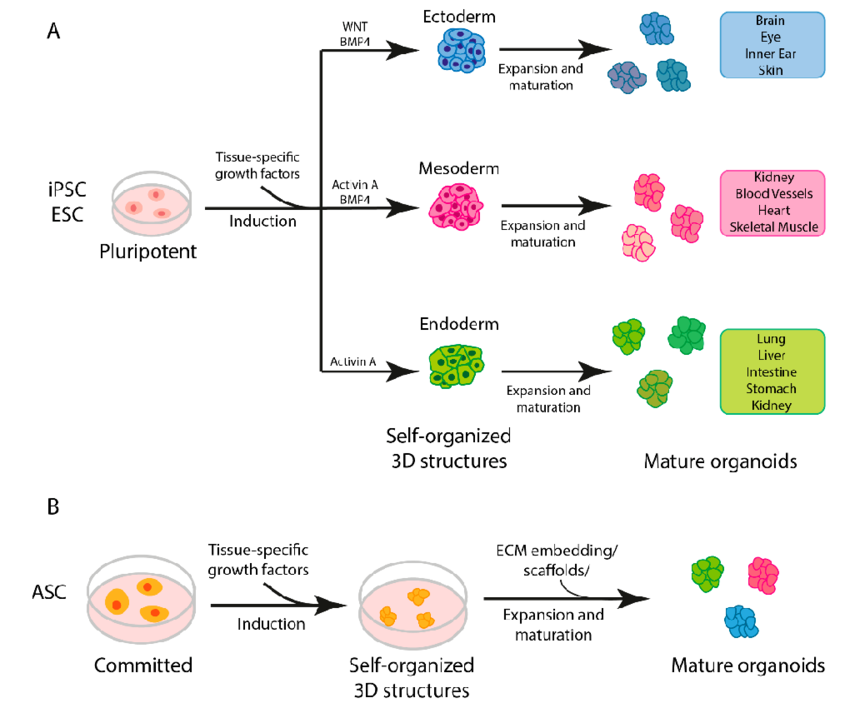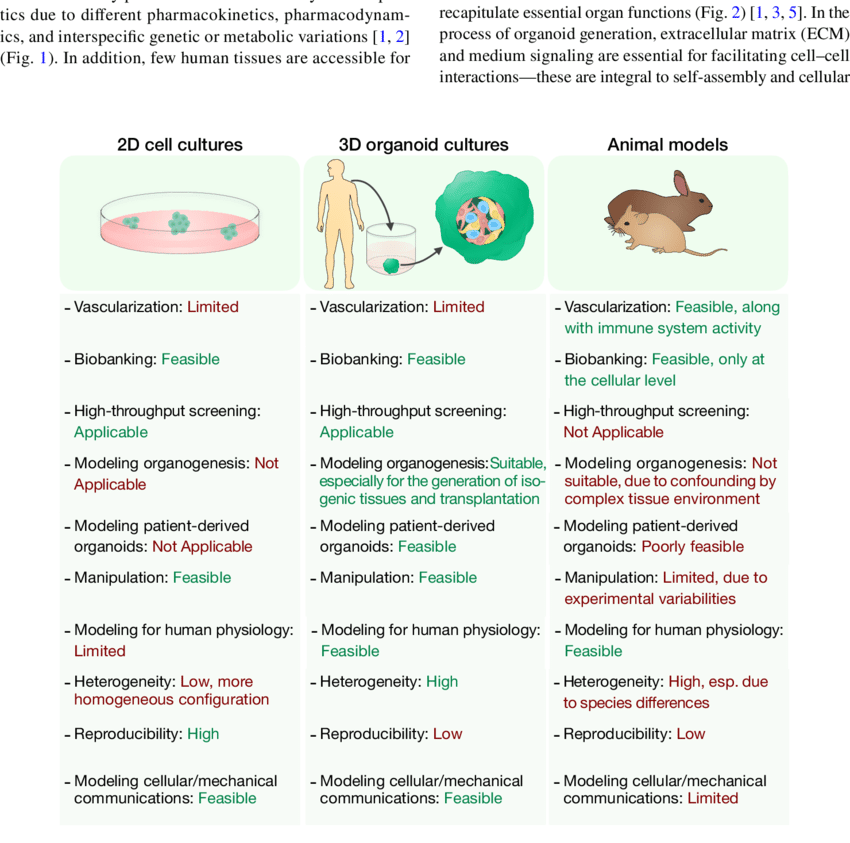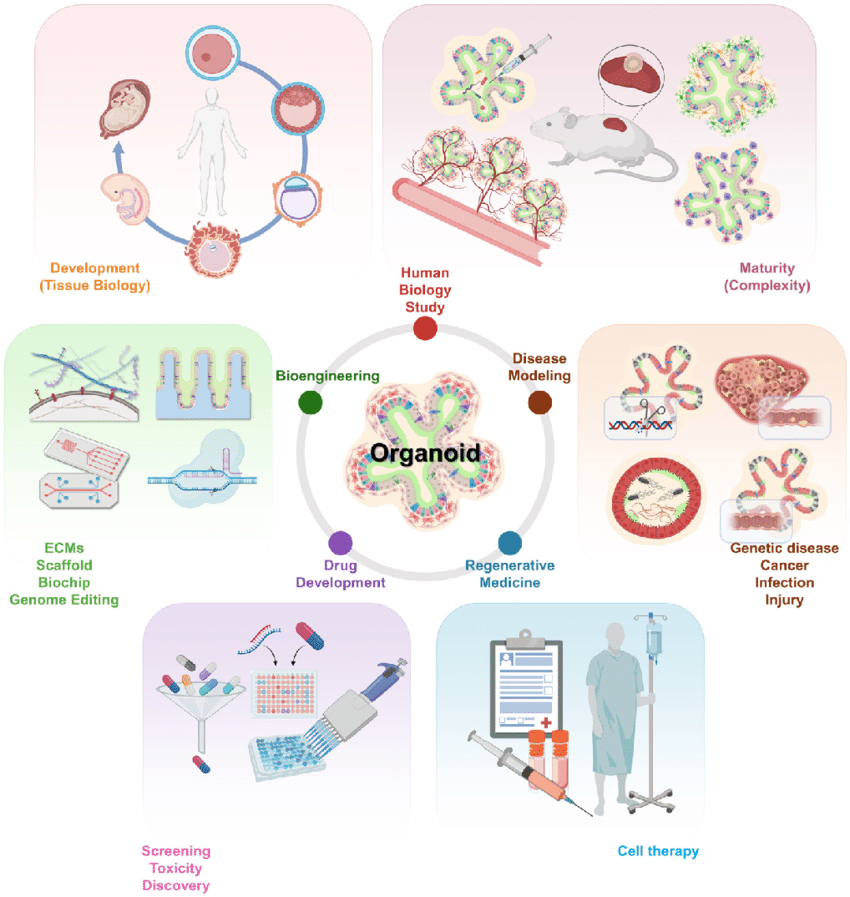Abstract: Traditional cell cultures have limitations in mimicking the complexity of human organs. Organoids are emerging as powerful tools. These are 3D self-organizing structures derived from stem cells or adult tissues. Organoids replicate the structure and function of real organs. This blog post explores the potential of organoids and lab-grown tissues in disease modeling. It highlights their advantages and applications in understanding human pathologies.
Introduction:
For many years, in vitro cell cultures have been a cornerstone of biological research. However, these flat, 2D environments fail to capture the intricate cell-to-cell interactions and spatial organization present in real tissues. This limitation reduces the accuracy of modeling complex diseases. Organoids offer a revolutionary approach by providing miniaturized, 3D replicas of human organs grown in a laboratory dish.
Generation of Organoids:
There are several ways to generate organoids:
- Pluripotent stem cells (PSCs): These versatile cells, like embryonic stem cells (ESCs) or induced pluripotent stem cells (iPSCs), can differentiate into various cell types. This allows for the creation of organoids representing different organ systems.
- Adult stem cells: Stem cells residing within mature tissues can also be used to generate organoids specific to that organ.
- Patient-derived tissues: Biopsies from patients can be used to develop disease-specific organoids. This offers a personalized approach to studying disease progression.
Advantages of Organoid Models:
- Mimicry of organ structure and function: Organoids exhibit cellular organization and functionality similar to their in vivo counterparts. This provides a more realistic platform for disease modeling.
- Disease modeling: Organoids can be genetically modified or exposed to pathogens to recreate specific disease states. This allows researchers to study disease mechanisms and identify potential therapeutic targets.
- Personalized medicine: Patient-derived organoids hold significant potential for personalized medicine. These models can be used to predict drug response in individual patients, paving the way for tailored treatment strategies.
Applications in Disease Research:
Organoids have become powerful tools for studying a wide range of diseases, including:
- Cancer: Organoids derived from tumors can be used to understand tumor formation, drug resistance, and metastasis.
- Neurological disorders: Brain organoids are valuable for investigating neurodegenerative diseases like Alzheimer's and Parkinson's disease.
- Infectious diseases: Organoids can be infected with pathogens to model host-pathogen interactions and evaluate potential antiviral or antibacterial therapies.
Future Directions:
The field of organoid research is rapidly advancing. Future directions include:
- Improved culture methods: Refining culture conditions to maintain organoid viability and functionality for extended periods.
- Vascularization: Integrating microfluidic technologies to create vascularized organoids, enabling studies of blood flow and nutrient transport.
- Organoid fusion: Creating complex organoid models by fusing different organoid types to study interactions between organs.
Conclusion:
Organoids and lab-grown tissues represent a significant leap forward in disease modeling. By offering a more human-relevant platform, these 3D mini-organs hold immense promise for improving our understanding of diseases and facilitating the development of novel therapeutic strategies. Researchers can leverage advancements in organoid technology, along with high-quality reagents from suppliers like Maxanim, to achieve breakthroughs in disease modeling and personalized medicine.



Organoids and Lab-Grown Tissues: Disease Modeling in a Dish